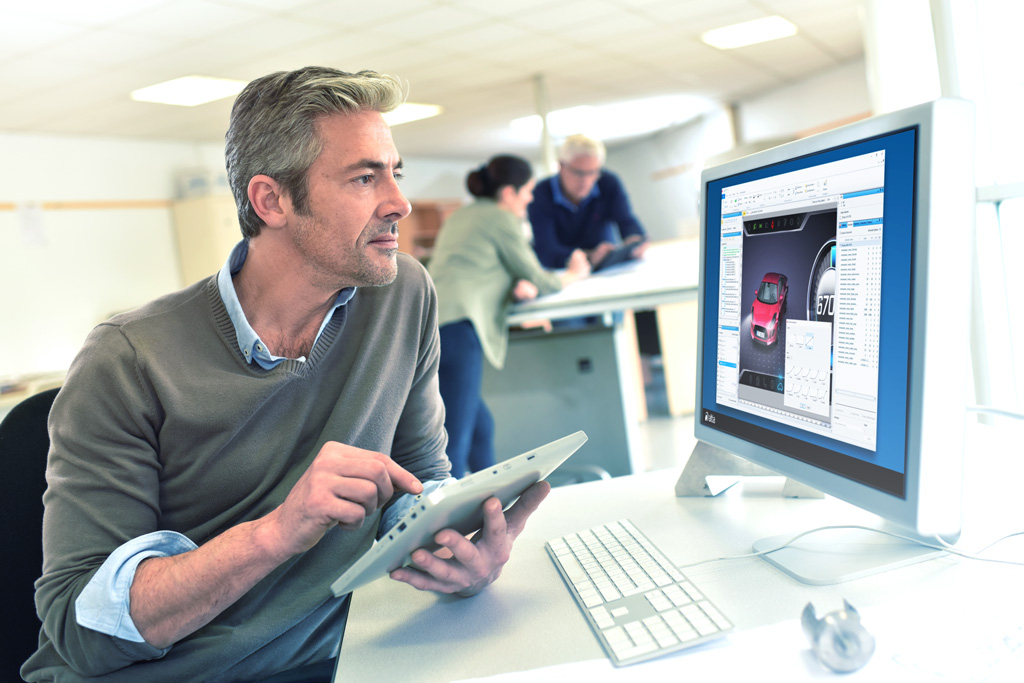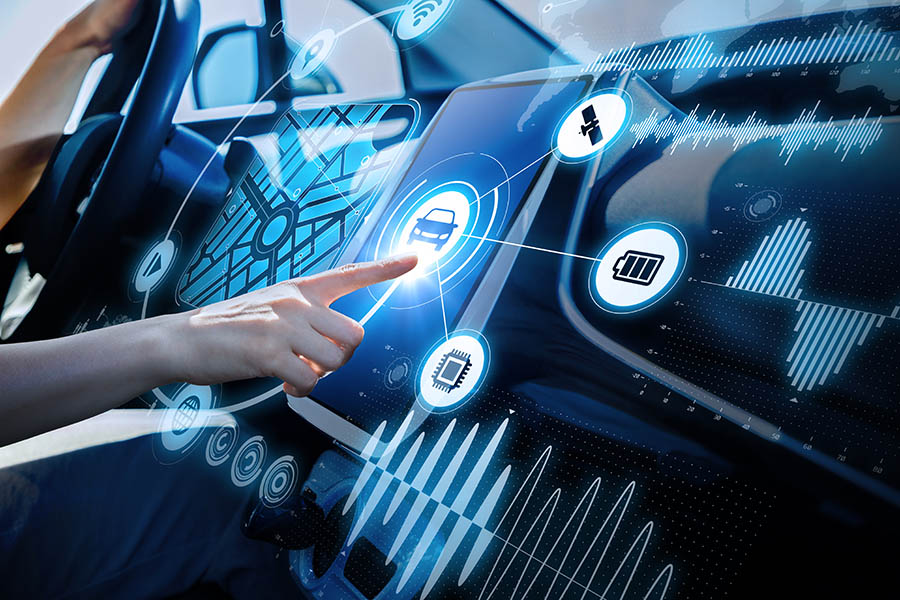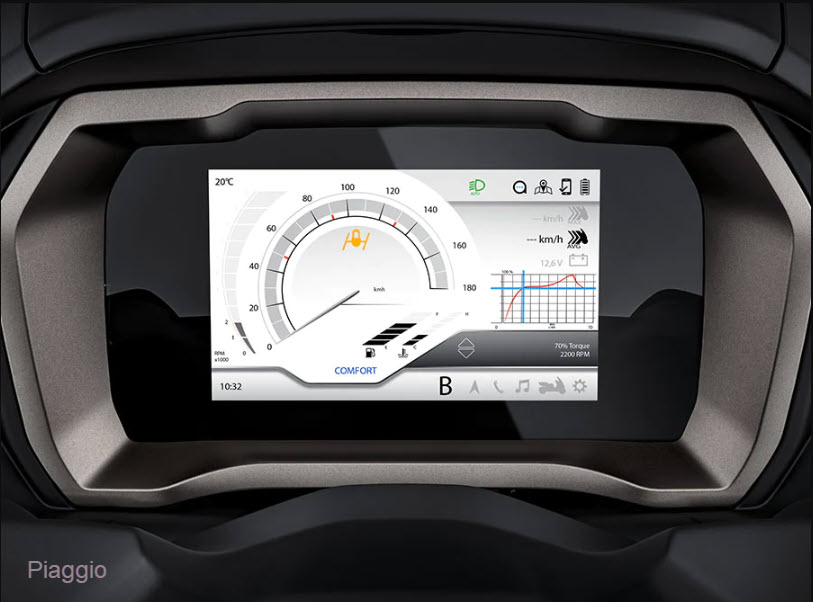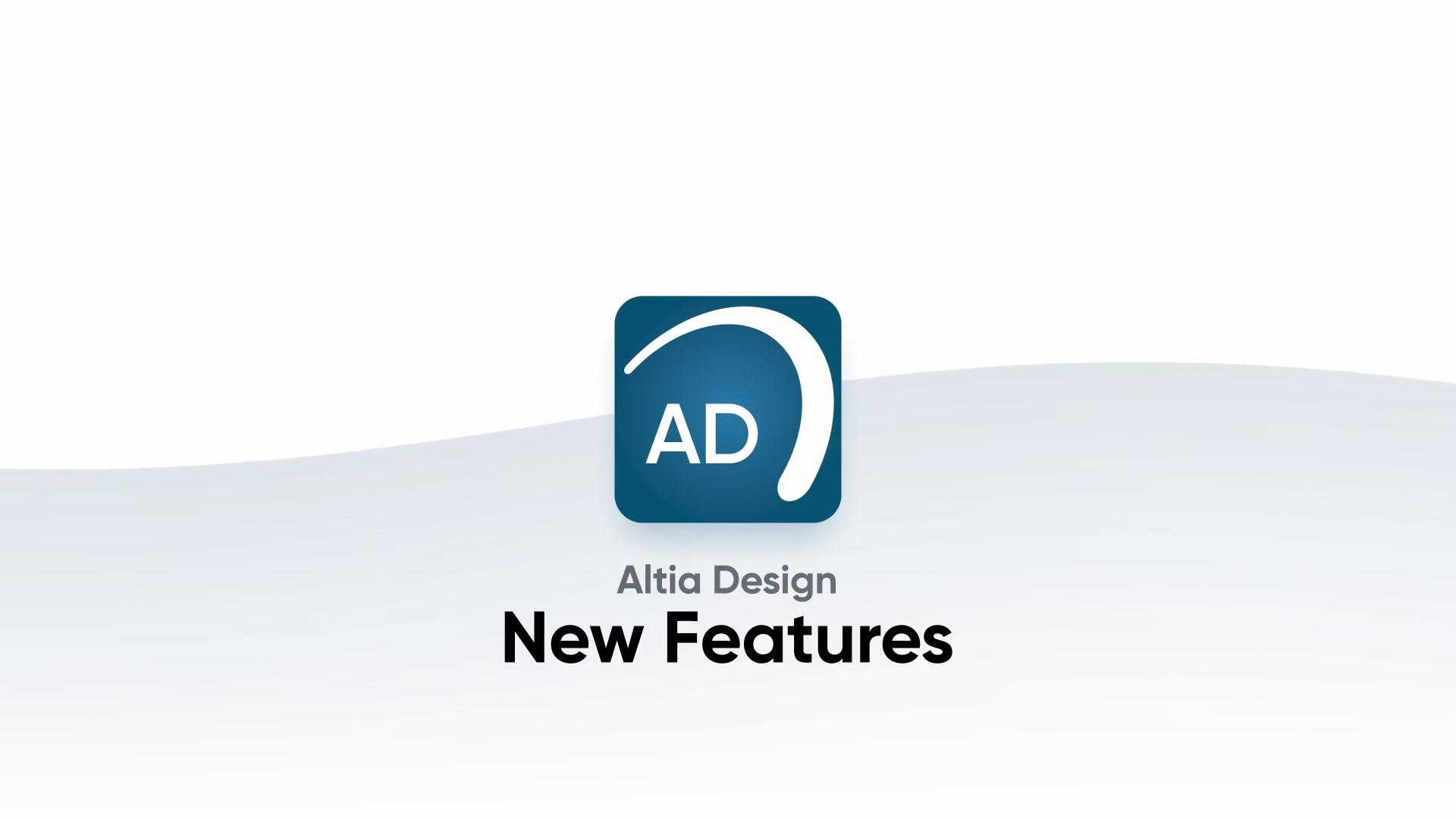Product: Altia Design
Meet Altia at Car.HMI Europe 2024

Altia, a leading provider of GUI development tools and software solutions, will join premier automotive OEMs and solution providers at Car.HMI Europe 2024. This event, which offers attendees powerful opportunities to network with other industry leaders and learn about latest automotive trends, innovations and challenges, will be at the Hotel Titanic Chaussee in Berlin, Germany on June 26-28, 2024.
The Altia team will be at the event to showcase our complete cockpit HMI platform that helps automotive OEMs and Tier 1s design, develop and deploy first-class embedded displays for any application and any hardware. We look forward to connecting with HMI experts at the show to discuss how Altia’s software solutions can help bring their digital cockpit experience to life. We also look forward to sharing more about Altia’s latest product, the Altia Plugin for Figma. This plugin, now available at no cost for current users of Altia Design 13.4, gives designers the power to get their Figma graphics to embedded hardware easily and with the lowest possible memory requirements.
If you will be at the show, please stop by and see us at the showcase to see Altia’s production-proven software running on automotive-grade hardware. Meet with our team to talk about how to design functional safety and first-class UX for your cockpit displays.
We look forward to seeing you in Berlin!
Event Details:
When: Wednesday, June 26 – Friday, June 28, 2024
Where: Hotel Titanic Chausee – Chausseestraße 30, 10115 Berlin, Germany
Register: Home | Car.HMI Europe (car-hmi.com)
Connect with us before the show: [email protected]
Figma Plugin is Now Freely Available for Altia GUI Software Users

Altia announces the release of Altia Exporter for Figma. This new plugin gives designers the power to get their Figma graphics to embedded hardware easily and with the lowest possible memory requirements. Available today on the Figma community, current users of Altia Design 13.4 and above can now use the Altia Exporter at no extra cost.
This new product further extends Altia’s flexibility to leverage artwork from industry-leading tools to include Figma. With Altia Exporter for Figma, designers save time and effort because they can import Figma assets to the Altia toolchain and begin designing their GUI without any need to rebuild, rename or restructure the original components. Leveraging Altia’s powerful features like Stamp Object, developers can easily optimize their Figma designs for embedded hardware—saving precious memory while delivering best performance on chip.
“Companies around the world count on Altia to deliver highly efficient, production-ready code that is true to their artists’ concepts. With the new Altia Exporter for Figma, we continue to empower designers to create in the tools that they want while giving developers the power to select the embedded hardware they want and get the best looking, best performing UI and UX to market,” stated Mike Juran, Altia CEO.
The Altia Exporter for Figma is available today at no cost to Altia GUI software users (version 13.4 and above) on the Figma Community. For more information or to request a demo of this new product, visit altia.com/get-started or email [email protected].
About Altia
Altia is a software company that provides graphical user interface design and development tools that can be used from concept to final production code. Our GUI editor, Altia Design, offers development teams the capability to implement a model-based development process enabling clear team communication and accelerated user interface development. Our code generator, Altia DeepScreen, supports a vast range of low- to high-powered processors from a variety of industry-leading silicon providers. Altia generates pure C source code that is optimized to take full advantage of hardware resources. Graphics code generated by Altia is driving millions of displays worldwide – from automotive instrument clusters, HUDs and radios to thermostats, washing machines and medical devices.
Our mission is to get the best automotive, medical and consumer interfaces into production in the shortest time on the lowest cost hardware.
Altia was founded in 1991. Its customers include automotive OEMs and Tier 1s like Continental Automotive, Denso, Stellantis, Ford Motor Company, General Motors, Honda, Renault, Magneti Marelli, Nippon Seiki, Valeo, Visteon and more – plus leading consumer device manufacturers like Electrolux, Whirlpool, NordicTrack and many others.
For more information about Altia, visit www.altia.com or email [email protected].
RWTH Aachen University Leverages Altia for ADAS, Autonomous and Software-Defined Vehicle HMI Research

Altia proudly announces our collaboration with the Institute for Automotive Engineering of RWTH Aachen University. The Aachen team is using Altia’s graphical user interface software for the development and deployment of a remote interaction automotive cockpit concept with an A-pillar-to-A-pillar screen.
Cockpit screens are increasing in size from generation to generation. As this evolution takes place, new concepts—like the black background head-up display featured by Continental Automotive at IAA Mobility 2023—are moving the automotive display surfaces further away from the driver and passenger. To interact with the growing displays the Aachen researchers hypothesize that an alternative to direct touch, which is currently the main interaction modality in today’s vehicles, is required for future vehicle concepts. This will be especially true for autonomous vehicles according to SAE L4, at which level the vehicle takes over responsibility and the human can turn to entertaining and distracting functions. The research team therefore is investigating remote interaction as one promising solution for automotive displays of the future.
This project, led by Research Associates Thomas Lennartz, Tobias Oetermann and Lena Wirtz, aims to develop an optimal remote interaction concept. To do so, the team is taking a close look at the drivers in their study, attempting to answer these questions.
- How distracting is their remote interaction concept?
- Is their remote interaction model intuitive or does it require driver and passenger training?
- What alternatives would drivers and passengers prefer for a remote interaction concept?
Altia’s HMI development software enables the RWTH Aachen University research team to apply a human-centered design process for developing their HMI concepts—and do so with advanced graphics capabilities. To this end, a project designed in rapid prototyping software was translated into Altia Design and deployed to target hardware. Altia’s model-based development process gives developers the capability to create user interfaces with assets from popular graphics software packages, perform user testing with their GUIs then quickly tweak to achieve a user experience that is safe, simple and user-focused.
“The Institute for Automotive Engineering of RWTH Aachen University is one of Europe’s leading automotive engineering institutions—collaborating with leading automotive companies and research institutes, such as BMW, Daimler, Volkswagen, Bosch, Fraunhofer and others. This is the university that graduates the men and women who will lead innovation at German automotive OEMs for years to come,” stated Armin Koelker, Altia Europe GmbH Sales Director EMEA. “Altia is proud to contribute our technology to this important research, while offering experience with our software for future German automotive innovators.”
“The RWTH Aachen University research team came up to speed quickly and achieved an impressive fully integrated cockpit in a short time. This speaks to the user-friendliness of Altia’s GUI development software and the genius of the members of the research team,” praised Philipp Michel, Senior Solutions Architect for Altia Europe GmbH. “We are honored and excited to continue to collaborate with them.”
About Altia
Altia is a software company that provides graphical user interface design and development tools that can be used from concept to final product code. Our GUI editor, Altia Design, offers development teams the capability to implement a model-based development process for clear communication and accelerated user interface development. Our code generator, Altia DeepScreen, supports a vast range of low- to high-powered processors from a variety of industry-leading silicon providers. Altia generates pure C source code that is optimized to take full advantage of hardware resources. Graphics code generated by Altia is driving millions of displays worldwide – from automotive instrument clusters, HUDs and radios to thermostats, washing machines and healthcare monitors. Our mission is to get the best automotive, medical and consumer interfaces into production in the shortest time on the lowest cost hardware.
Altia was founded in 1991. Its customers include automotive OEMs and Tier 1s like Continental Automotive, Denso, Stellantis, Ford Motor Company, General Motors, Honda, Renault, Magneti Marelli, Nippon Seiki, Valeo, Visteon and more – plus leading consumer device manufacturers like Electrolux, Whirlpool, NordicTrack and many others.
For more information about Altia, visit www.altia.com or email [email protected].
Altia Achieves ASPICE Level 2 for Automotive Industry Standard HMI Development Software

Altia announced today that its HMI development software has achieved Automotive SPICE® (ISO/IEC 33061, formerly ISO/IEC 15504) Level 2. This achievement highlights Altia’s commitment to providing world-class automotive software capabilities and processes. Specifically, ASPICE Level 2 provides OEMs and Tier 1s with the confidence to leverage Altia’s software in mission-critical display applications for the automotive cockpit.
“Altia is committed to providing our customers with industry-proven, high-performing, innovative automotive platforms—and our ASPICE Level 2 achievement reflects that commitment,” said Michael Hill, Vice President of Engineering at Altia. “We are proud to receive this prestigious distinction—and we look forward to continuing to deliver on that commitment.”
Automotive SPICE, Software Process Improvement and Capability dEtermination, was developed to address the software development needs of the automotive industry. To achieve this status, Altia was required to meet strict requirements, including having:
- A defined and documented software development process that covers the entire software development lifecycle, from requirements management to software testing and maintenance.
- A management process that ensures the planning, monitoring and control of our software development activities and resources.
- A trained and competent staff able to perform the software development tasks according to the defined process.
- A quality assurance process that evaluates the quality of our software products and processes and identifies and resolves any issues or defects.
- A configuration management process that manages the changes and versions of our software products and artifacts.
- A verification and validation process that ensures that our software products meet the specified requirements and expectations of our customers and stakeholders.
These requirements are based on the Process Assessment Model (PAM) of ASPICE, which defines a set of guidelines and criteria for assessing the capability level of software development processes in the automotive industry. More information about the PAM can be found in this link.
The ASPICE Level 2 assessment was conducted by members of the Continental Automotive Systems teams from Europe and North America. Altia successfully achieved ASPICE Level 2 on November 21, 2023.
“Broadly applying the lessons learned on the journey to ASPICE Level 2 certification facilitates the development and release of exceptional software on a predictable cadence,” says Mike Morgan, Director of Product Delivery.
About Altia
Altia is a software company that provides graphical user interface design and development tools that can be used from concept to final product code. Our GUI editor, Altia Design, offers development teams the capability to implement a model-based development process for clear communication and accelerated user interface development. Our code generator, Altia DeepScreen, supports a vast range of low- to high-powered processors from a variety of industry-leading silicon providers. Altia generates pure C source code that is optimized to take full advantage of hardware resources. Graphics code generated by Altia is driving millions of displays worldwide – from automotive instrument clusters, HUDs and radios to thermostats, washing machines and healthcare monitors. Our mission is to get the best automotive, medical and consumer interfaces into production in the shortest time on the lowest cost hardware.
Altia was founded in 1991. Its customers include automotive OEMs and Tier 1s like Continental Automotive, Denso, Stellantis, Ford Motor Company, General Motors, Honda, Renault, Magneti Marelli, Nippon Seiki, Valeo, Visteon and more – plus leading consumer device manufacturers like Electrolux, Whirlpool, NordicTrack and many others.
For more information about Altia, visit www.altia.com or email [email protected].
How 100 Years of Auto UX Benefits Marine Display GUI Design

The automotive industry has existed for more than 100 years, evolving from a self-propelled horseless carriage to a luxury product heavily integrated with technology to become faster, easier to use and safer than ever before.
The marine industry is undergoing similar changes, in which graphic user interfaces (GUI) have evolved from simple analog gauges to complex digital systems that integrate data from multiple sources and perform complex calculations to provide real-time information to the user.
However, marine users are only sometimes aware of these changes and how they affect their experience on the water. They still expect simple operations where they can easily read and interpret information. Marine display developers can learn much by understanding the history of automotive user experience (UX) design when designing displays for boats. There is room for innovation in this market, and there are many opportunities for companies to take advantage of automotive UX expertise to create cutting-edge products that customers will love.
Key Takeaways from Automotive UX
Why reinvent the wheel? Here are some of the key lessons learned from 100 years of automotive UX design:
User-Centric Design
Automotive manufacturers have been designing cars around drivers’ needs for decades, focusing on functionality and ease of use. As time went on and technology became more advanced, auto manufacturers began investing in user-centric design practices that concentrated on creating an intuitive experience for their customers.
For the marine industry, designers can build user-focused products by investing time in researching how boaters interact with their boats on the water—learning their needs, preferences and frustrations through user feedback—to guide design and functionality. By understanding these factors, they can create products that align with customer needs and expectations to make the UX as simple and easy to use as possible.
Safety Prioritization
Designers must always consider how their products can impact users’ safety. When designing new features or redesigning existing ones, careful consideration of how they fit into a captain’s environment before implementation. Displays should provide easy-to-read relevant information and feedback through audio cues or visual indicators without being a distraction. This way, users can quickly comprehend their vessel’s system status and make any needed adjustments.
User-Friendly GUI With Accessibility in Mind
Keep it simple—because complexity is the enemy of usability. The best GUIs are simple, easy to use and accessible to all users. They should be designed with the user in mind, making them intuitive and eliminating confusion by streamlining systems and separating controls. Additionally, using color-coded visual cues or icons instead of text labels can reduce clutter and make the information they present quickly identifiable so the user can react accordingly.
Technology Integration
One thing we can learn from automotive UX is how to integrate technology. In the past, cars had large, inflexible displays that did not integrate well with other systems on the vehicle. Today, car manufacturers are incorporating infotainment systems into their vehicles to control all functions from one interface for a seamless UX. It allows them to use their favorite apps in their cars without switching between devices or systems.
Owing to the COVID pandemic, the last few years have shown a 40% surge in U.S. boat sales. Additionally, boat ownership is skewing younger, with 31% of boat owners being millennials. Millennials have grown accustomed to and expect integrated technologies. Marine display developers should consider integrating their displays with other onboard systems, such as navigation, depth finders, safety equipment and even audio streaming apps so that users can learn and monitor fewer separate interfaces while operating.
When it comes to integrating advanced telematics systems, there are many capabilities to benefit marine users by embracing the power of connectivity. For example, remote diagnostics can enable users to diagnose issues without physically returning to the boat. Over-the-air updates keep vessels current with the latest technology, software and maps, while real-time data sharing enables users to collect and share information about their boats.
Additionally, voice commands, gesture recognition and natural language processing features can simplify and enhance the interaction between users and vehicles/equipment by reducing manual input requirements.
Responsive Display Performance
The UI should be snappy, avoid lag between input and response and provide clear and reliable feedback to the user so they know that their action was registered. This empowers the user to feel more in control of the interface and the boat and makes the entire UX more enjoyable. Alternatively, with less integrated UIs, users can experience an apparent disconnect between the vessel’s hardware and software, making for a poor UX between disjointed systems.
User Environment Consideration
One of the first things a designer will consider is context—where the product will be used, who will use it and how it will be used. Not to overstate the obvious, but this is especially important when designing systems like marine displays with multiple components that must work together seamlessly in use cases exposed to outdoor environmental conditions. The hardware and UI should be designed to withstand exposure to direct sunlight, water, wind, dust, sand and harsh conditions. Any displays should be readable in all lighting conditions, including direct sunlight.
Touch screen displays warrant special consideration for their intended use. Resistive and capacitive touchscreens have different strengths and require several considerations in the marine environment. For example, will users wear gloves when using the screen? What are the optimal brightness and contrast for the screen? Durability of the screen, possible exposure to the elements and screen cost are also factors for designers to bear in mind when specifying and developing their displays.
Altia’s DeepScreen code generator allows designers to quickly generate code for GUI models and run on production-ready hardware in real-world situations, not only speeding up development but enabling designers to test and tweak their UX on hardware in the wild before they go to production.
User Feedback Loops
Customers are essential. Not only do they bring in revenue through purchasing your products, but they offer extensive insight into your product and how it works in the real world. Their feedback is essential when designing a GUI—learning what they need, what features and functionality work, what could be improved plus any use cases and insights not considered during design and pre-production. Collecting user feedback can guide UI design to mitigate known usability issues and ensure GUIs are user-friendly before releasing them to market.
Cross-Functional Collaboration
In addition to working with users directly, taking advantage of cross-functional collaboration between departments creates a holistic approach to development to produce better products faster. Open communication across disciplines—designers, software engineers, systems engineers, hardware engineers, human factors experts and marketing—provides unique insights, including those from Subject Matter Experts who can give valuable viewpoints on aspects of production that might be overlooked in more rigid production approaches.
Altia’s CloudWare™ platform allows collaboration across production groups to remotely evaluate, test and analyze hardware-software stacks with real-time results.
Design Hardware with Flexibility in Mind
The automobile industry’s widespread hardware supply chain shortage can be similarly felt in the marine industry. Today there is a shift in how OEMs are designing their GUI programs due to new hardware releases or lack of availability of hardware previously used in marine products. These OEMs are leveraging GUI design tools that enable their designers and developers to scale their GUI models to different hardware and even different projects. Making the GUI applicable to various displays allows production to use a variety of hardware depending on availability and cost while also future-proofing the UI and scalability across multiple projects, display screen sizes and products.
Companies like Medallion Instrumentation Systems are using Altia’s industry-leading tools to design, develop and deploy embedded GUIs for marine applications—scaling their designs to suit a variety of projects and use cases.
Why Choosing the Right Industry-Leading Design Tools and Tech Matters
Ultimately, the principles of good UX design are universal. Good design is good design—whether it’s for a dashboard or a touchscreen display. As the marine user base continues to grow and diversify, designers should take a moment to consider how they can improve their products and make them more practical, safer and easier to use for everyone. To keep ahead of the curve, they must explore technologies and resources that can enhance the user experience of their products and allow them to create a more comprehensive product offering.
With industry-leading GUI development tools and engineering services, Altia ensures that designers and developers have what they need to get a custom, high-performance GUI to market.
Visit altia.com/get-started and begin to put your best interface forward.
Altia ON: 2023 Piaggio MP3

Motorcycle and motorbike companies such as Harley-Davidson, Kawasaki, Piaggio and Triumph trust Altia software to drive the graphics of their most advanced multi-functional displays. Here is a shining example of the safety, style and performance that Altia can deliver—the Piaggio MP3.
This is the most advanced and luxurious model ever produced by Piaggio, the pioneer and leader of the three-wheeler segment. This three-wheeler features a 7-inch TFT display, the largest display in its category. This display functions as the control and connection center for Piaggio’s MIA connectivity system, which allows drivers to access calls, manage playlists and use GPS. Drivers can also customize the display according to their needs and preferences.
Using the instrument cluster, which is clearly inspired by high class cars on the road, riders can manage numerous features including navigation, connectivity and, on the 530 hpe Exclusive version, also the engine maps (Comfort, Eco and Sport) and cruise control, as well as clearly displaying the images of the rear camera while reversing (exclusive to this equipment).
Take a ride on a Piaggio MP3 with this YouTuber to see this gorgeous display in action!
The TFT also integrates the innovative ARAS (Advanced Rider Assistance System) devices, which are based on a 4D imaging radar technology developed by Piaggio Fast Forward. The ARAS devices include the BLIS® (Blind Spot Information System) and the LCDAS (Lane Change Decision Aid System), which alert drivers to fast-approaching vehicles and help them avoid collisions. These devices are exclusive to the Piaggio MP3 and make it the first scooter to be equipped with such advanced safety systems.
Delivering innovative UX for embedded displays is Altia’s specialty. Designed into over 100 million cars, trucks, SUVs, motorcycles, medical devices, home appliances and more, we offer production-proven software and services for getting pixel-perfect graphics to production.
Visit www.altia.com/get-started. Let’s get your next GUI on the road together!
Designing GUIs for Microcontroller Units

Motorcycle UX Design Lessons Learned from Automotive

Altia: The Complete HMI Platform for Automotive Cockpit Displays

As the automotive industry moves closer and closer to fully autonomous, even lower end vehicles are evolving into rolling computers—with ever-increasing interconnectivity and complexity in the vehicle cockpit. Car buyers now expect to be connected to the outside world—and OEMs are responding to their requirements. It is estimated that by 2030, 95% of all new vehicles will incorporate intermediate or advanced infotainment, telematics and V2X capabilities to communicate between vehicles, users and infrastructure.
With these dramatic shifts in technologies from more mechanical and analog controls to those that are partially or fully digital, automotive OEMs are challenged with anticipating how customers interact with their vehicles, namely through the human-machine interface (HMI).
The HMI acts as a hub of the wheel for the vehicle cockpit’s connected user experience, integrating the spokes that provide information to the driver while sending commands to the various systems both inside and outside the car. The considerable shift toward electrification and autonomous vehicles has resulted in new regulatory requirements. These requirements have compelled OEMs and suppliers to invest more R&D into user interface hardware and software lifecycles and integration, whether their digital cockpits include a multitude of dedicated displays in a single vehicle to just a single in-dash touchscreen.
But the simplicity of a well-architected UI masks great complexity. Cockpit software design includes many considerations, such as how to integrate multiple compute domains and vehicle applications across varying operating systems. Customers have grown accustomed to smartphones being at their side—so how can OEMs keep them connected to their communication and entertainment while adhering to regulations for driver safety and attention? How can OEMs maintain brand continuity between native HMI screens, multiple connectivity solutions and those of the passengers’ personal devices? This is a complex challenge encompassing a vast number of varying requirements, especially given the increase in autonomy. OEMs can embrace these challenges by leveraging a production-proven platform to bring this all together efficiently.
Meeting OEM Challenges with Proven Innovation
Altia delivers a single, comprehensive platform to meet OEM’s cockpit software challenges and the needs and expectations of their customers. They provide a complete end-to-end cockpit software solution for OEMs by combining the best design tools, advanced technology, customization capabilities and expertise within one unified platform.
Altia has helped some of the largest OEMs create custom HMIs in various vehicles as well as develop and deploy their entire software stack—from sedans, SUVs, semis and motorcycles to electric construction-agriculture equipment and everything in between. The integration of Altia’s powerful features and hardware flexibility in over 100 million production vehicles on the road have been shaping the industry. Altia’s software solution is at the heart of over 375 vehicle dashboards for the upcoming generation.
A Comprehensive Collection of Tools and Expert Service
Altia’s cockpit software platform sets the standard for designing, developing and deploying innovative, first-class automotive user experience. The platform enables display design and deployment on any screen within a car, including instrument clusters, HUDs, infotainment displays, passenger displays and rear passenger entertainment systems. No matter how grand and challenging your vision is, Altia can enable a seamless look and feel in your vehicle cockpits to provide an immersive experience that is representative of the brands across your fleet of vehicles. By reusing the core of your work, Altia enables you to keep design cost-efficient while enabling endless opportunities to differentiate. Providing the tools and expert support you need to bring your UI from concept to production quickly and efficiently, Altia’s HMI development platform saves time and reduces production costs.
Altia Advantages for Automotive
- Hypervisor operations — HMI cockpit operates on both sides of your hypervisor
- Code generation — Quick conversion of HMI prototypes and graphics to deployable graphics code across a wide range of hardware
- Integration and display management — Guidance on how to manage and integrate cockpit real estate to create cohesive and intuitive signature UIs for customers while maintaining brand identity
- Head-up display expertise — Best-in-class HUDs integration to show system information and advanced driver-assist system (ADAS) warnings to keep drivers’ eyes on the road
- Automated testing solutions — Reduction in time-to-market HMI testing costs, minimizes human error
Integrations
Altia’s cockpit HMI platform can seamlessly integrate the following services and applications into your displays:
- Android Auto and Apple CarPlay
- Third-party mapping programs
- ADAS
- Media players
- Telematics units
- Automotive infrastructure integrations via Vehicle-to-Everything (V2X)
Altia Software Tools and Services Support Every Step of Your HMI Process
With the increasing complexity in the automotive world and increasing demand for OEMs to pull user experience and data ownership in-house, it’s easy to get overwhelmed with an approach to managing it all. Altia is here to bring all the pieces together and help OEMs to realize their automotive user experience goals. Altia guides OEMs through designing, developing and deploying their custom automotive cockpits.
Altia’s complete automotive software platform supports every step of the development process, from concept design through delivery. Altia automotive solutions enable OEMs to meet their digital cockpit goals today and in the future. Altia understands these system complexities and has the proven tools to help you with your automotive software challenges.
Ready to start your automotive cockpit development journey? Altia delivers the expertise, software and services to guide you throughout the process to meet your needs and realize your goals. We would love to hear about your project and how we can help you get it on the road.
Visit www.altia.com/get-started.
